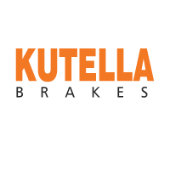-
Welcome to Auto Parts Forum
Whether you are a veteran automotive parts guru or just someone looking for some quick auto parts advice, register today and start a new topic in our forum. Registration is free and you can even sign up with social network platforms such as Facebook, X, and LinkedIn.
Classic cars in Mexico
-
Similar Topics
-
By shelitaauto
Source: Gasgoo
URL:
link hidden, please login to view According to foreign media reports, the Australian Federal Automobile Industry Chamber of Commerce released automobile sales data in May, the month of new car sales in Australia hit a record high. Sales of hybrid vehicles doubled year on year to reach 15.8 percent of the market, compared with a 0.4 percent increase in electric vehicle sales.
Almost one in every four new cars in Australia is currently a low-emission vehicle, so hybrid and electric vehicles are taking a greater share of the market. Meanwhile, Australians’ love affair with larger cars is still on the rise, with SUVs still dominating and ute sales continuing to grow.
This trend has more than doubled the popularity of hybrid cars in 2024, with more than 66,000 units sold, compared to less than 30,000 in the same period in 2023.
Electric vehicle sales also increased in Australia in May, with more than 8,900 units sold, accounting for 8.1 per cent of all new car sales, with more than 40,000 new electric vehicles on the road in Australia in the first five months of the year.
Tony Weber, the chamber’s chief executive, said the auto industry is working hard to meet the needs of drivers. “The continued growth in vehicle sales underscores consumer confidence and demonstrates the industry’s ability to meet the diverse needs of Australian consumers in the face of the current economic challenges,” he said.
However, large vehicles remain a popular choice for drivers regardless of fuel consumption, with SUVs accounting for more than half of vehicles sold and light commercial vehicles accounting for 22 percent of new vehicles. UTE also took three of the top five best-selling cars in May, with the Ford Ranger taking the top spot, followed by the Toyota Hilux and Isuzu’s D-Max light truck in fourth place.
Image source: Ford
Toyota was again the top-selling car manufacturer in Australia for the month, followed by Ford, Mazda, Kia and Hyundai. The data also showed a drop in sales for electric car leader Tesla, with the US company selling 3,567 vehicles in Australia in May, compared with 4,476 in the same month last year.
Its main electric car rival BYD, however, saw sales climb, with the Chinese company selling 1,914 electric vehicles in the month, up 32 percent from a year earlier.
The growing sales of electric and hybrid vehicles come ahead of the introduction in January of Australia’s first fuel efficiency standard, a legal standard that will set emissions limits on carmakers’ fleets of passenger cars, large and commercial vehicles in an attempt to reduce transport emissions by 2030.
-
By garryhe
Products Overview
Whether it’s semi metallic brake pads or ceramic brake pads, KETULLA’S expertise and innovation are completely reliable – we have been for over 23 years.
We are one of brake system suppliers and major in manufacturing brake pads for cars in a variety of different cars models, we cover 2351 different types brake pads models– rear brake pads, front brake pads for cars, trucks & Suvs, is your strong and reliable partner supplier.
Your Benefits
In the braking system industry in China our products have obtained a lot of certificates based on its excellent quality. And visually, our brake pad production formula and layer process and quotation are also at the forefront of development in China.
Ketullabrakes brake pads have obtained link hidden, please login to view link hidden, please login to viewcertificates; Up to now, our excellent brake performance has enabled us to obtain cooperation from link hidden, please login to view link hidden, please login to viewaround the world, such as low-dust Ketullabrakes ceramic brake pads, which are very popular in the South American market, demonstrating our product quality control ability. Maximizes our braking power at high speeds and in emergency situations.



Recommended Posts
Join the conversation
You can post now and register later. If you have an account, sign in now to post with your account.
Note: Your post will require moderator approval before it will be visible.